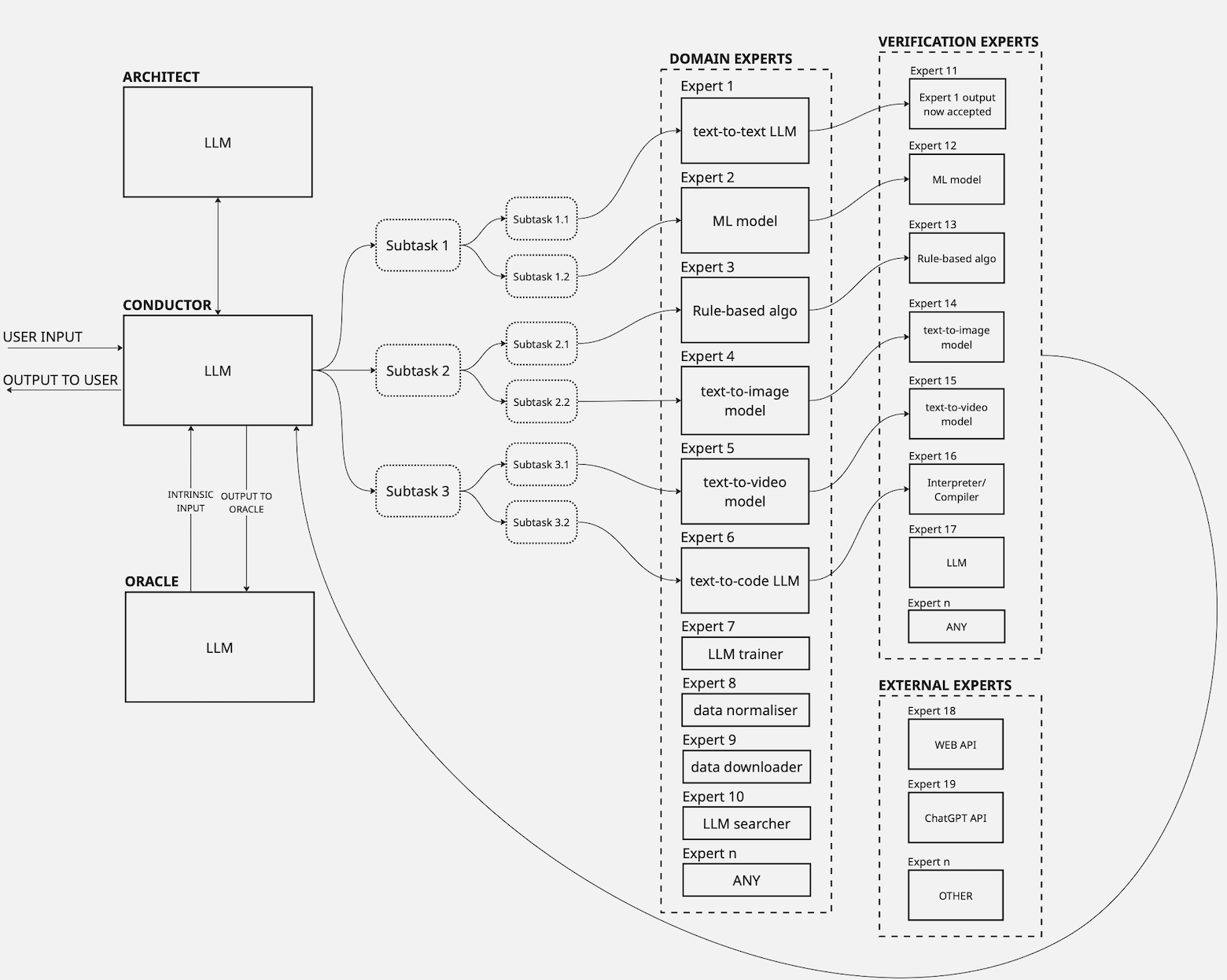Our Technology
Self-evolving modular AI that delivers highly accurate results, runs anywhere, and learns continuously—making reliable, embodied, human-level AI a reality.
Key features
- Self-evolving Continuously learns and adapts to unique challenges in real time
- Scalable Modular system scales across domains and devices
- Smarter & safer Modular experts deliver high accuracy for mission-critical reliability
- Runs anywhere Hardware-agnostic patented design ideal for local and embodied AI
Our novel architecture
At the core of what makes humanity.ai so powerful is Chariot Technologies Lab's iCon architecture (based on a proprietary framework), which allows for the design of efficient AI-orchestrated systems composed of interoperable expert modules of any software type and modality (e.g., generative AI, ML, rule-based algos).

How it works
- Orchestration A Conductor LLM decomposes tasks and routes subtasks to niche Domain Experts, leveraging best in open-source models
- Verification Every expert is paired with a verification module to mitigate hallucinations and ensure accuracy
- Knowledge gap identification System self-recognizes knowledge gaps (extrinsic via user input or intrinsic via internal Oracle)
- Self-evolution Architect directs addition of new skills/tools and/or improved capability with existing skills/tools to address knowledge gap (e.g., it can find a dataset online and train a new expert on that, or it can download an existing niche expert)
- Hardware-agnostic execution Powered by patented tech for increased speed and parallelizable execution on any hardware.
- Global Context Sharing Our DisNet server system enables multi-device orchestration and global context sharing across the modular system, so all the modules have access to the same info
Learn more in our blog about modularity as the key to human-level artificial intelligence.
